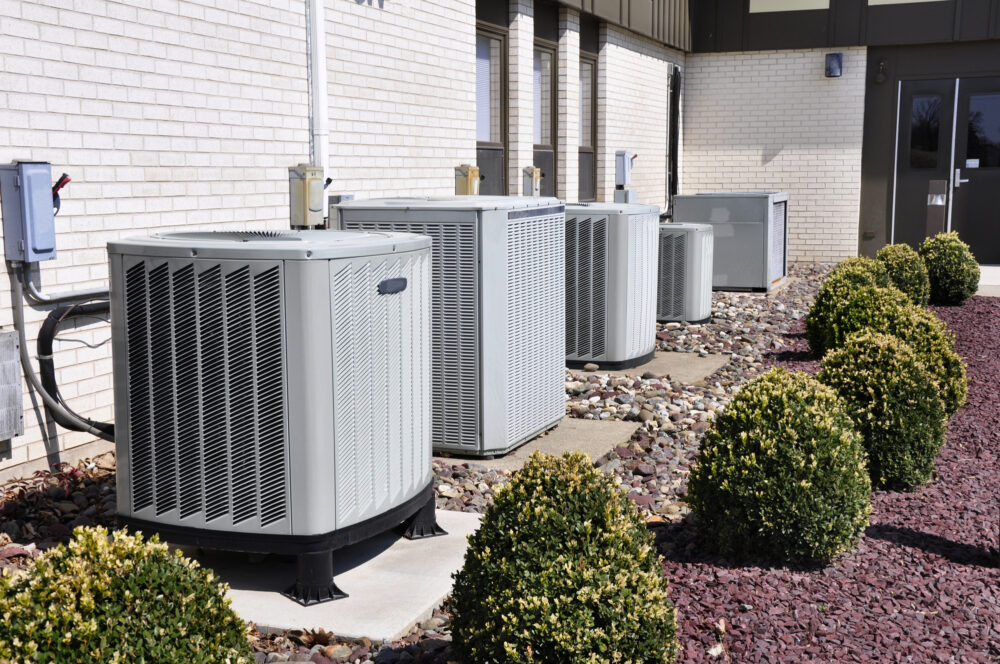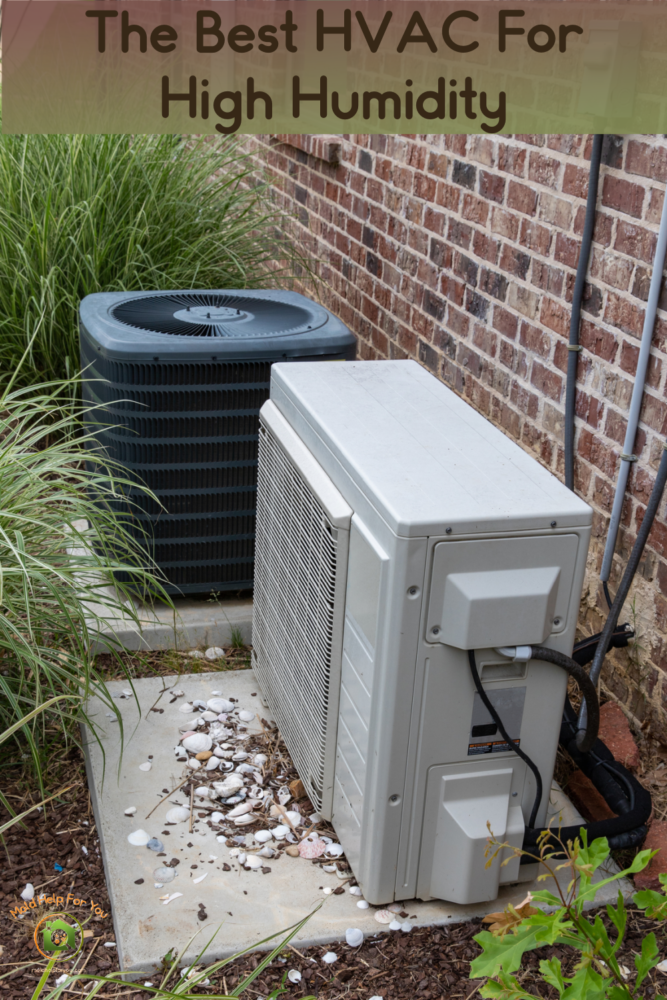What Is The Best HVAC System For High Humidity?
This post may contain affiliate links. Read our full disclosure.
Summer is here, and so is the dreaded high humidity! It’s a real pain, causing discomfort and even health issues. Plus, let’s remember the potential damage to your home. That’s why you need a top-notch HVAC system to handle the heat. In this article, I’ve got the scoop on the best HVAC systems for high humidity. So sit back, relax, and let’s beat the heat.
Understanding High Humidity
High humidity refers to the amount of moisture present in the air. It can significantly impact our daily lives, as it greatly affects how we feel and function. When humidity rises above 60%, people may feel uncomfortable, sticky, and sweaty. High humidity levels can also cause damage to the home and its furnishings, such as mold growth, peeling paint, and buckling wood.
Importance of a Proper HVAC System
A reliable HVAC system is key to a healthy and comfortable indoor environment. With the right HVAC, you can control the temperature, humidity, and air quality in your home or office, creating a safe and cozy space. Proper HVACs also slash the risk of health issues caused by poor air quality and boost energy efficiency, leaving you with more cash in your pocket. So, invest in a top-notch HVAC system and keep it well-maintained for flawless functionality.
Factors to Consider for High Humidity HVAC Systems
1. Size of the HVAC System
The size of the HVAC system is crucial when considering high humidity levels. It should be properly sized to handle the excess moisture to maintain comfortable indoor air quality. The system should be matched to the size of the building and the intended use of the space.
2. Dehumidification
Dehumidification is essential to control high humidity levels in HVAC systems. It is crucial to ensure that the HVAC system has a dehumidifying component or the ability to integrate a separate dehumidifier if needed. It is especially important in warmer climates or during the summer months.
3. Proper Air Flow
Proper airflow is essential for maintaining comfortable indoor air quality and reducing high humidity levels. The HVAC system should be designed and installed to maximize airflow and ensure proper ventilation. It includes regularly cleaning air filters, ductwork, and vents.
4. Energy Efficiency
Energy efficiency is important when considering high-humidity HVAC systems. Choosing an energy-efficient HVAC system can reduce energy costs while maintaining comfortable indoor air quality. Considering the long-term costs and benefits of an energy-efficient HVAC system is important.
5. Maintenance
Regular maintenance is vital to ensure the proper functioning of high-humidity HVAC systems. It includes regular cleaning of air filters, ductwork, and vents, as well as checking and adjusting the settings of the HVAC system as needed.
6. Cost
The cost of installing and maintaining high-humidity HVAC systems can vary greatly depending on the size of the building and the intended use of the space. Considering different HVAC systems is important to consider the long-term costs and benefits. It includes energy costs, maintenance costs, and potential repair costs.
7. Expert Installation and Service
Expert installation and service are essential for high-humidity HVAC systems. Professional installation and regular maintenance by a qualified technician can help ensure the system’s proper functioning, reducing the risk of breakdowns and costly repairs.

Types of HVAC Systems Suitable for High Humidity
High humidity can be a challenge for HVAC systems. However, specific types of HVAC systems are ideal for buildings located in areas with high humidity.
1. Dehumidifiers
Dehumidifiers are designed to combat excess moisture in the air. They work by drawing in air and removing moisture through condensation. Dehumidifiers are ideal for buildings in areas with high humidity levels, especially when humidity exceeds 60%. Installing dehumidifiers can help prevent the growth of mold and mildew, which can have harmful health effects.
2. Variable Refrigerant Flow (VRF) System
A VRF system is a versatile air-conditioning system that eliminates excess moisture from the air by cooling it in a latent heat exchange process. The VRF system can access different zones in a building and deliver heating or cooling as needed. The VRF system is suitable for buildings with varying occupancy levels or differing temperature needs. It also works well in places with high humidity levels.
3. Chilled Water System
Chilled water systems operate by removing the excess moisture in the air by cooling it. The air is then circulated using a fan to lower the temperature. This type of system works well in areas with high humidity levels, especially in commercial or industrial settings. The chilled water system is reliable and durable, reducing the chances of breakdowns and malfunctions.
4. Packaged Terminal Air Conditioner (PTAC)
A PTAC is a heating and cooling unit that functions separately within a room. It’s suitable for buildings with varying occupancy levels since it heats or cools individual rooms as needed. A PTAC works well in high-humidity areas since it has a built-in dehumidifier, eliminating excess air moisture.
5. Combined Air-Conditioning and Dehumidifying Systems
Air-conditioning and dehumidifying systems draw in air and cool it to eliminate moisture through condensation. These systems are suitable for buildings in high-humid areas since they provide both cooling and dehumidifying capabilities. The combined system is cost-effective and easy to maintain.
High humidity can be a challenge for HVAC systems. However, by installing the right system, you can ensure that the air in your building remains healthy and comfortable. Whether you choose a dehumidifier, VRF, chilled water, PTAC, or combined air-conditioning and dehumidifying system, consult a professional HVAC contractor to ensure the system is installed correctly, serviced, and maintained.
FAQs
1. Can any HVAC system handle high humidity?
Some HVAC systems can’t handle high humidity levels. HVAC systems for high-humidity areas have a dehumidification system to remove excess moisture from the air. Without this system, high humidity can cause damage to your home and health. It’s important to make sure your HVAC system is designed to handle humidity levels in your area.
2. Is it necessary to install a separate dehumidifier?
It depends on the humidity levels in your home and your personal preferences. Live in an area with high humidity year-round or experience high humidity levels in your home. A separate dehumidifier may be necessary to maintain a comfortable and healthy indoor environment. Excess moisture in the air can lead to mold growth, musty odors, and even health problems. However, a separate unit may be unnecessary if you live in a drier climate or have an HVAC system with a built-in dehumidifier.
3. How often should I maintain my HVAC system?
Your HVAC system should be maintained at least once a year, preferably before the heating or cooling season starts. Regular maintenance can improve the performance of your system, prevent breakdowns, and extend the lifespan of your equipment. Changing your air filter every 1-3 months is essential to ensure proper airflow and indoor air quality.
4. Are there any energy-efficient options available?
Yes, several energy-efficient HVAC systems are available for high-humidity conditions. Say goodbye to high humidity problems with energy-efficient HVAC systems! Look for systems with high SEER ratings and Energy Star certifications to get the best of both worlds: top-notch performance and energy savings.
5. Should I monitor humidity?
Yes you should! The investment in a quality humidity meter is small and could help you prevent humidity related mold issues.
Article by Walter E. Bennett from Green Leaf Air | Micro Clean DFW. He specializes in intricate HVAC design, air duct cleaning, repairing & maintenance.

